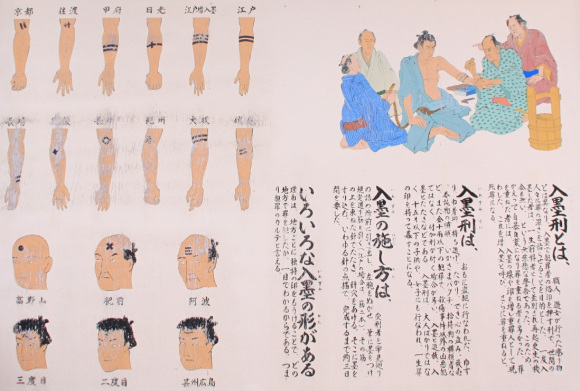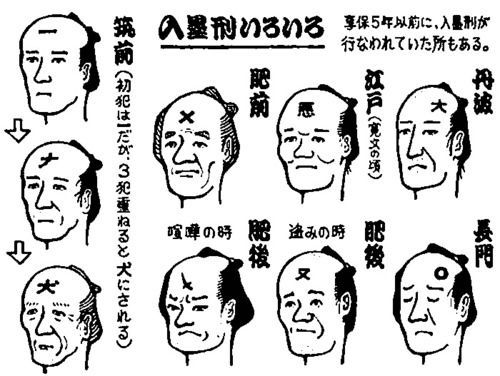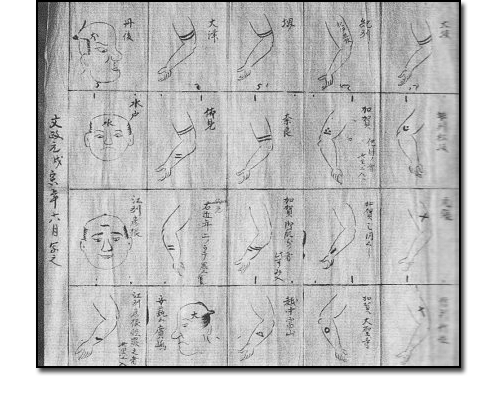The Tattoos that Marked the Criminals of the Edo Period
Traditional tattoos were strong signifiers; murderers had head tattoos, while theft might result in an arm tattoo.

The art of tattooing has a long and rich history in Japan. Today, tatoos often remain stigmatised, associated with criminality and nonconformity. There is a historical reason for this, however: during the Edo period (1603-1868), criminals were brandished with tattoos in order to identify and punish them. Despite the fact that this practice was banned during the Meiji period, the stigma remains.
Three Strikes
The tattoos of the Edo period were strong signifiers; murderers had head tattoos, while theft might result in an arm tattoo. This practice, irezumi kei, or tattoo penalty, replaced the more bloodthirsty decapitations and removal of limbs that preceded it. However, head tattoos also operated on a three strikes system, each crime punished with a single stroke of a Chinese symbol (大), after which was death. Each region had its own symbol representing both crime and location, rendering it possible to immediately identify the details of the act committed. In Hiroshima people were tattooed with dogs; Chikuzen, lines; Takayama, dots; and Hizen, crosses.
While today’s perceptions of tattooing in Japan might be rooted in this 5000-year history, contemporary organised crime groups such as the yakuza continue the practice of tattooing, perpetuating its association with criminality. This has even led to misconceptions that tattoos in Japan are illegal; however, the law forbidding tattoos was abolished in 1872.



TRENDING
-
The Tattoos that Marked the Criminals of the Edo Period
Traditional tattoos were strong signifiers; murderers had head tattoos, while theft might result in an arm tattoo.

-
Chiharu Shiota, Red Threads of the Soul
Last year, more than 660,000 people visited the retrospective 'Chiharu Shiota: The Soul Trembles' exhibit at the Mori Art Museum.

-
‘Before Doubting Others, Doubt Yourself. Who Can Truly Say a Dish Isn’t What It Used to Be?’
In ‘A Non-Conformist’s Guide to Surviving Society’, author Satoshi Ogawa shares his strategies for navigating everyday life.

-
The Story of Sada Yacco, the Geisha who Bewitched Europe
Described by Dazed magazine as the first beauty influencer, she has been restored to her former glory since 2019.

-
Ito Jakuchu's Naturalist Paintings
From 15 September until 14 October 2018, the Petit Palais showcased the artist's iconic ‘Images of the Colourful Realm of Living Beings’.




